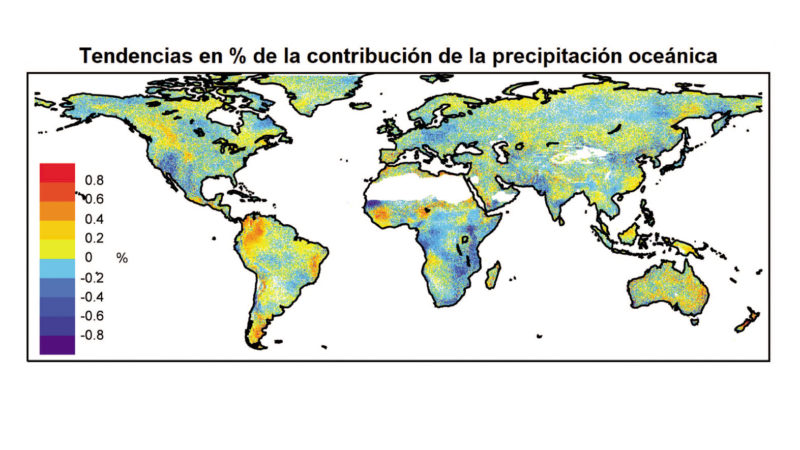In the context of a climate change context, oceanic moisture is increasingly important in continental precipitation, especially in tropical regions. This is one of the main conclusions of a work carried out by Luis Gimeno, Raquel Nieto and Rogert Sorí, researchers from the Ephyslab CIM-UVigo group (Environmental Physics Laboratory). The study was recently published in Climate and Atmospheric Science, an online and open access journal published by the Nature group in collaboration with the Center of Excellence outside Climate Change Research.
On the relevance of the theme addressed in this article, the researchers from the Ourense Campus-“Campus da Auga”, explain how the precipitation that falls on the continents “defines the scope and nature of terrestrial ecosystems and human activity in them.” This precipitation, they recall, is supplied by the moisture that they supply directly from the ocean or later from the continents themselves, and both the processes that control evaporation and the main mechanisms of moisture transport clearly differ between the ocean and the continent. Taking these considerations into account, they add, “in the context of a changing climate, the relationship between precipitation of oceanic and terrestrial origin can be expected to vary globally and regionally as well as the influence of these two basic components of total precipitation on global and regional precipitation trends, especially in the tropics”.
0.51% increase per decade
According to the authors of the work, “the acceleration of the hydrological cycle with climate change, based on thermodynamic arguments, leads to an intensification of moisture transport from the main sources, that is, generally oceanic regions where evaporation exceeds precipitation , facing the main sewers on the continental zones where the precipitation exceeds the evaporation ”. The intensification of this moisture transport, they add, “implies that the oceanic moisture source for continental precipitation will grow in importance compared to land-based sources.” Particularly, the members of Ephyslab clarify, “in those regions where rainfall is more linked to the transport of moisture, such as in tropical regions, precipitation trends must therefore be controlled from their origin in the oceans.”
In the study carried out, their managers detail, they applied an approach based on a Lagranian technique to estimate precipitation in a target region given the proportions of moisture transported from the two sources (ocean and continent). This method, they comment, allows them to divide the origin of the precipitations between the moisture coming from the oceans and the moisture of continental origin “to demonstrate that the percentage of precipitation with ocean origin has already increased in the current climate (1980-2016), at rate of 0.51% per decade in global terms, the increase in tropical regions being especially important, reaching up to 1.15% per decade ”.
Their work, they add, “also shows a statistical relationship between precipitation and the percentage of oceanic precipitation in tropical regions, in which both experienced important trends.” As a result of their study, they emphasize that “we can conclude that the contribution of ocean sources to global precipitation is increasing, which is controlling the trends of precipitation in tropical areas.”
Source: DUVI



